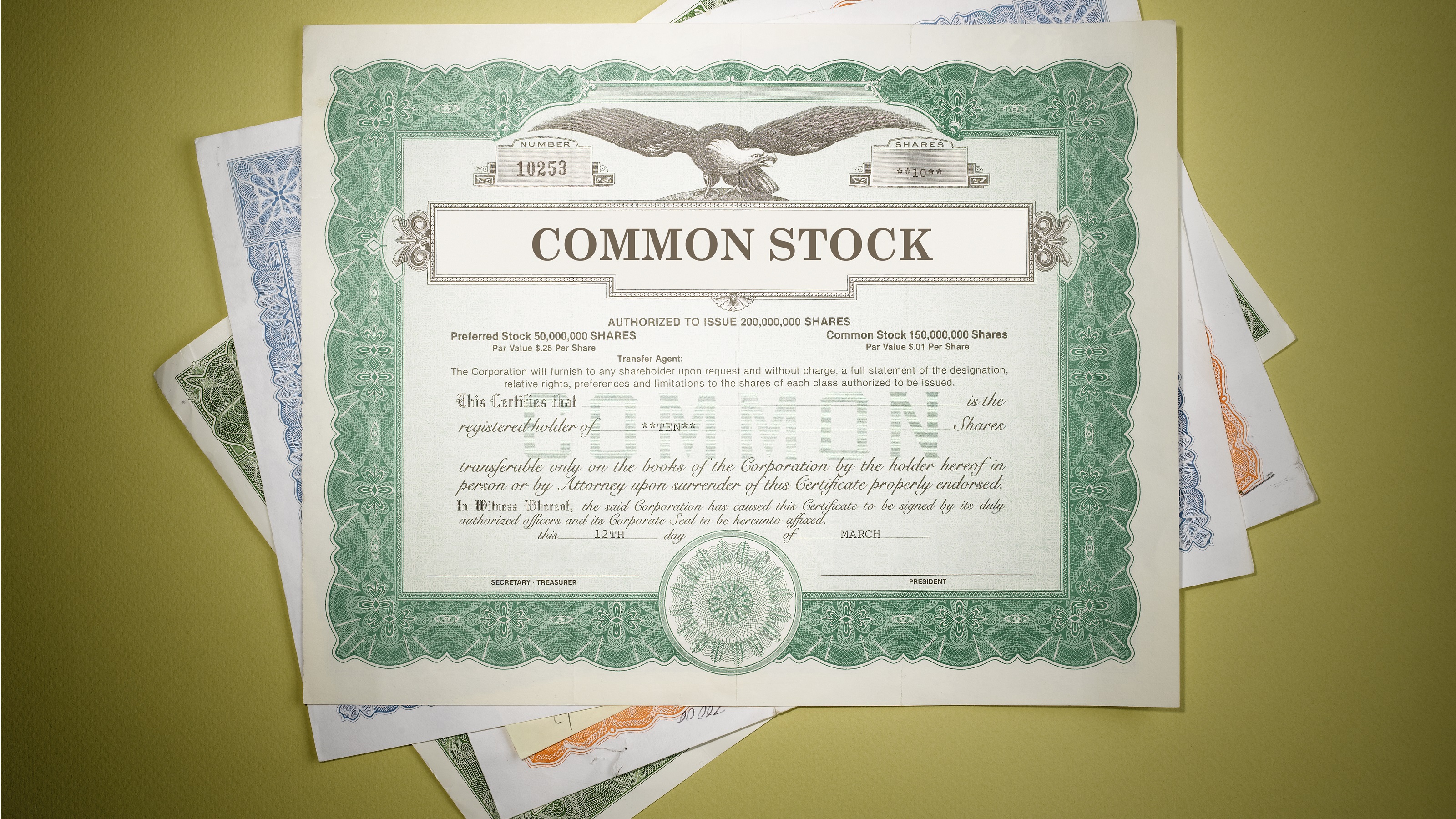Understanding Mutual Fund Share Classes
Your returns may differ depending on your mutual fund share class.

You have to be careful in the supermarket cookie aisle. If you’re in a hurry and thoughtlessly grab a package of Oreos, you might get a rude surprise at home when you bite into an unexpected flavor from the company’s growing menu, such as peanut butter, birthday cake or lemon.
The need for vigilance is greater — and the stakes higher — when you’re shopping for mutual funds. Fund firms have a dizzying array of share classes for their funds. If you find a fund you like, you may have to decide which of its varieties is right for you. Different companies offer different options, but the share classes you might see include A, ADV, B, C, F, I, J, K, L, M, N, R, S, T, V, W, Y and Z.
Some classes and names are simply marketing ploys. Jensen Investment Management named its retail investor class “J” to reinforce the company’s name. Vanguard’s “Admiral” class is a nod to the HMS Vanguard, the British ship that inspired the firm’s name. And Karner Blue Capital named its only fund class “Butterfly” for the endangered Karner blue butterfly.

Sign up for Kiplinger’s Free E-Newsletters
Profit and prosper with the best of expert advice on investing, taxes, retirement, personal finance and more - straight to your e-mail.
Profit and prosper with the best of expert advice - straight to your e-mail.
Indeed, there is no standard for naming fund share classes. The labels can have different meanings from fund to fund. “Deciphering mutual fund share classes can be a time-consuming and overwhelming process for retail investors,” says Matthew Garasic, a fee-only financial adviser in Pittsburgh.
Fund share classes, in addition to having different rules about who can purchase them and varying minimum initial investments, usually charge different expense ratios. In some cases you could pay a separate sales charge, too. Those costs can add up. “The share class an investor chooses can have a long-term impact on wealth accumulation,” says Garasic.
To help you figure out which share class of any given mutual fund is right for you, we’ll break down common share classes and offer some guidelines to keep in mind as you shop for funds.
Why there are different share classes
The main reason mutual fund companies create share classes is to pay the assorted middlemen that sell their funds, such as financial advisers, insurance companies, brokerage platforms and 401(k) plans, among others, says Eric Jacobson, a director of the research firm Morningstar.
The compensation for these intermediaries often comes out of the funds’ fees, hence the different share classes and their wide-ranging expense ratios. “It is all driven by dollars,” says Jacobson. The dividing lines between share classes boil down to three factors:
- Sales charges: In mutual fund speak, a “load” fund imposes a sales charge or commission when you buy or sell shares. Front-end-load classes, typically labeled “A” shares, levy a median toll of 4.25% when you purchase them. These shares are commonly sold through advisers, who pocket the load as a commission.
On the flip side, share classes with a back-end load, typically labeled “B” and “C,” can charge you on the way out, when you sell them. B and C share classes often have higher expense ratios than A shares. - Initial investment size: Share classes typically vary by initial minimum investment, too. Some are built for deep-pocketed investors, such as pension funds and retirement plans. These classes, often called Institutional or I shares, can require large initial deposits of $500,000 or more. In return, institutional shares typically have low expense ratios.
Some fund firms also offer a break on annual fees for individual investors who are willing to fork over heftier minimum initial investments. For instance, investors can buy the investor class of the Vanguard Wellington fund for an initial outlay of $3,000 and pay 0.25% in fees per year. But for an initial investment of $50,000, the fund’s Admiral share class charges 0.17% in annual fees. - Channel. Where you hold your fund shares — in a personal account or a 401(k), for example — or whether you use a financial adviser, may dictate the share class you own. In a 401(k) investment plan, you may be offered the I share class of T. Rowe Price Mid-Cap Growth. If your adviser purchases fund shares for you, they will likely be Advisor shares. But if you buy shares in the fund on your own, you’ll get the investor shares.
Every class charges a different expense ratio: Mid-Cap Growth Advisor charges 1.02% in annual fees, the investor share class charges 0.77%, and the I share class charges 0.63%.
In addition, each brokerage negotiates its own deal with fund firms, says Steve Sanders, executive vice president of marketing and product development at Interactive Brokers.*
Finally, some fund firms create share classes to sell on broker platforms. For example, although American Funds’ A shares are generally adviser-sold, the firm’s F-1 share class is open to anyone, without a sales charge, at online brokers such as Fidelity and Schwab. The F-1 shares typically sport a slightly higher expense ratio than the A shares, but the difference is small.
How to shop smart among mutual fund share classes
The best way to navigate this alphabet soup is to stick with funds that trade free of commissions and transaction fees at your online broker, such as those available from Schwab’s Mutual Fund OneSource, Fidelity’s FundsNetwork or E*Trade’s menu of funds.
If a fund is offered in a no-fee network, there’s usually just one share class available, so there’s no choosing required. And you won’t pay a front-end or back-end load. But you may pay the brokerage a short-term-trading fee if you turn around and sell the shares within 60 or 90 days, depending on the firm.
If you must pay a sales charge to buy a fund, opt for the share class with the lowest expense ratio, if a choice is available, and plan to hold the shares for the long haul. And consider checking the full list of your fund’s share classes to make sure you’re getting the best deal available to you.
Morningstar lists all the share classes of any given fund, including symbols, loads, expense ratios, investment minimums and purchase constraints (institutional, say). Just look up a fund, then scroll down the landing page to “Review Other Classes.”
The Fund Analyzer tool from the Financial Industry Regulatory Authority also lists each fund’s share classes and lets you compare up to three classes to see how their respective fee schedules may impact potential returns over time — three or 10 years, say, assuming a certain annualized return. However, you’ll have to check with your brokerage firm to find out which classes are available to you.
The complexity of mutual fund share classes may be one reason investors are flocking to exchange-traded funds. “All the different mutual fund share classes can create the perception of special deals for some people,” says Danan Kirby, a vice president at Ariel Investments. ETFs trade commission-free at most brokerages and charge all investors the same expense ratio. “Simplicity is beauty. Everyone gets the same deal,” says Kirby.
* A previous version of this article stated that Charles Schwab charged a load for the A class shares of the John Hancock Regional Bank fund. A Schwab spokesperson says that its website failed to display a footnote that explains that it waives the sales charge.
Note: This item first appeared in Kiplinger's Personal Finance Magazine, a monthly, trustworthy source of advice and guidance. Subscribe to help you make more money and keep more of the money you make here.
Related Content
Get Kiplinger Today newsletter — free
Profit and prosper with the best of Kiplinger's advice on investing, taxes, retirement, personal finance and much more. Delivered daily. Enter your email in the box and click Sign Me Up.

Kim Clark is a veteran financial journalist who has worked at Fortune, U.S News & World Report and Money magazines. She was part of a team that won a Gerald Loeb award for coverage of elder finances, and she won the Education Writers Association's top magazine investigative prize for exposing insurance agents who used false claims about college financial aid to sell policies. As a Kiplinger Fellow at Ohio State University, she studied delivery of digital news and information. Most recently, she worked as a deputy director of the Education Writers Association, leading the training of higher education journalists around the country. She is also a prize-winning gardener, and in her spare time, picks up litter.
-
 Americans Worry More About Going Broke in Retirement Than Dying, Study Shows. Here's What to Do.
Americans Worry More About Going Broke in Retirement Than Dying, Study Shows. Here's What to Do.Inflation, taxes and Social Security are the three top concerns for retirees, according to the 2025 Allianz Annual Retirement Study
By Kathryn Pomroy
-
 Doing This With Your 401(k) Could Cost You $18,000
Doing This With Your 401(k) Could Cost You $18,000Your old 401(k) accounts may be slowly bleeding money — because the power of compounding can work against you, too.
By Christy Bieber
-
 12 Investments No Retiree Should Make
12 Investments No Retiree Should MakeIn retirement, when it's wise to take fewer risks with your nest egg, some investments are just nuts.
By David Rodeck
-
 Why You Need a Trusted Contact for Your Brokerage
Why You Need a Trusted Contact for Your BrokerageYour brokerage or bank needs someone to reach out to if it's concerned you're experiencing fraud or cognitive decline. That's where a trusted contact can help.
By John Waggoner
-
 Can a New Manager Cure Vanguard Health Care Fund?
Can a New Manager Cure Vanguard Health Care Fund?Vanguard Health Care Fund has assets of $40.5 billion but has been ailing in recent years. With a new manager in charge, what's the prognosis?
By Nellie S. Huang
-
 What Is a Medallion Stamp? The Requirement for Transferring Securities
What Is a Medallion Stamp? The Requirement for Transferring SecuritiesTransferring securities from one account to another often requires this extra step.
By Emma Patch
-
 How Dividend Reinvestments Work for Retirement
How Dividend Reinvestments Work for RetirementWant your retirement investments to keep growing? Here's what you should know about dividend reinvestment.
By Robert H. Yunich
-
 20 Ways to Clean Up Your Finances This Spring
20 Ways to Clean Up Your Finances This SpringSpring cleaning is therapeutic and stops costly problems from building up around the home. Why not tackle the dusty corners of your finances at the same time?
By Lisa Gerstner
-
 The Free-Lunch Strategy to Reduce Risk From Tech Stocks
The Free-Lunch Strategy to Reduce Risk From Tech StocksA recent rout in tech stocks has some investors thinking more defensively. This "free-lunch portfolio" strategy can help.
By Anne Kates Smith
-
 How to Survive Market Mayhem
How to Survive Market Mayhem2025 is turning out to be a turbulent year for the market, but don't panic. Here are four ways investors can ride out the storm.
By Jeffrey R. Kosnett